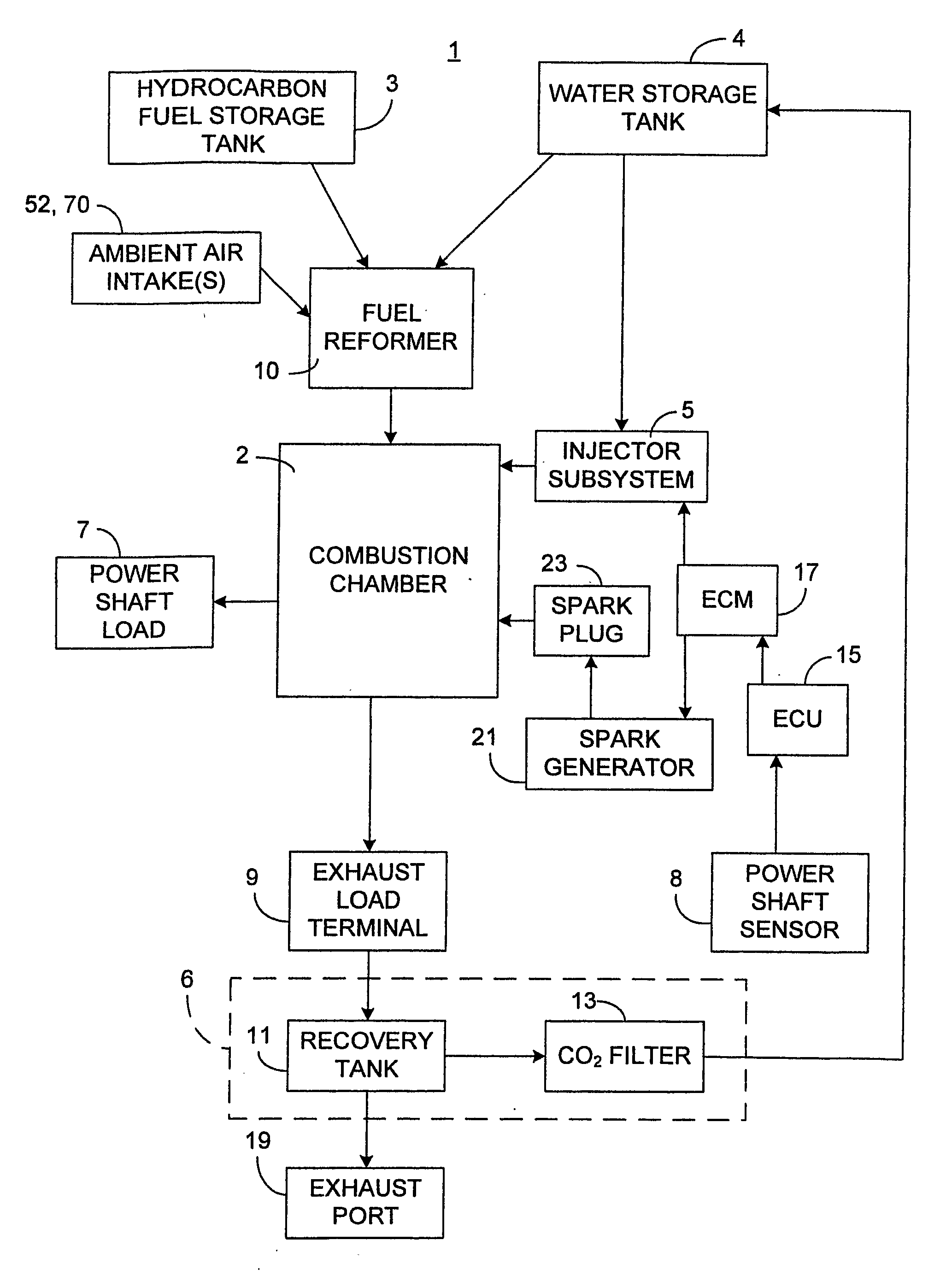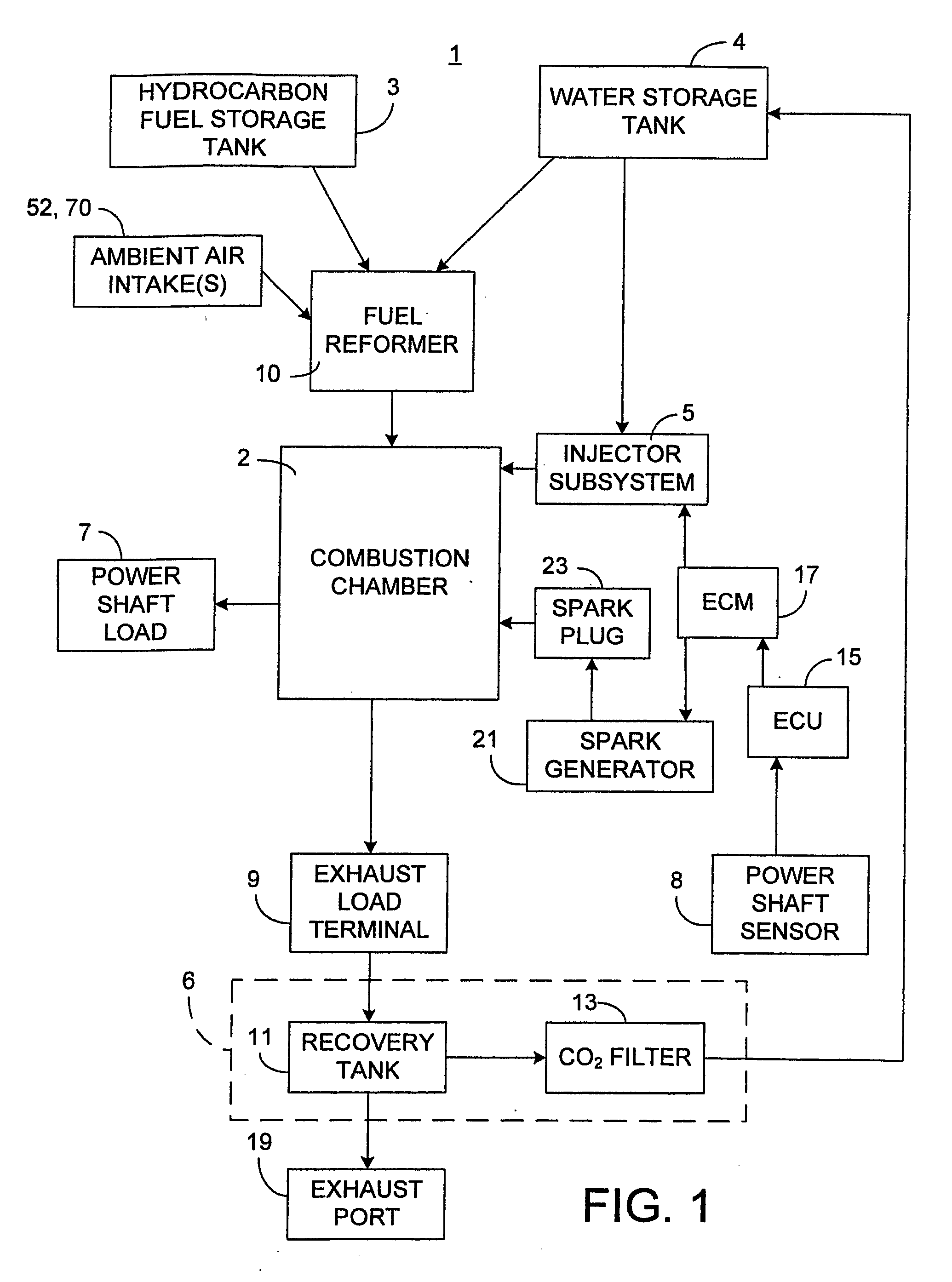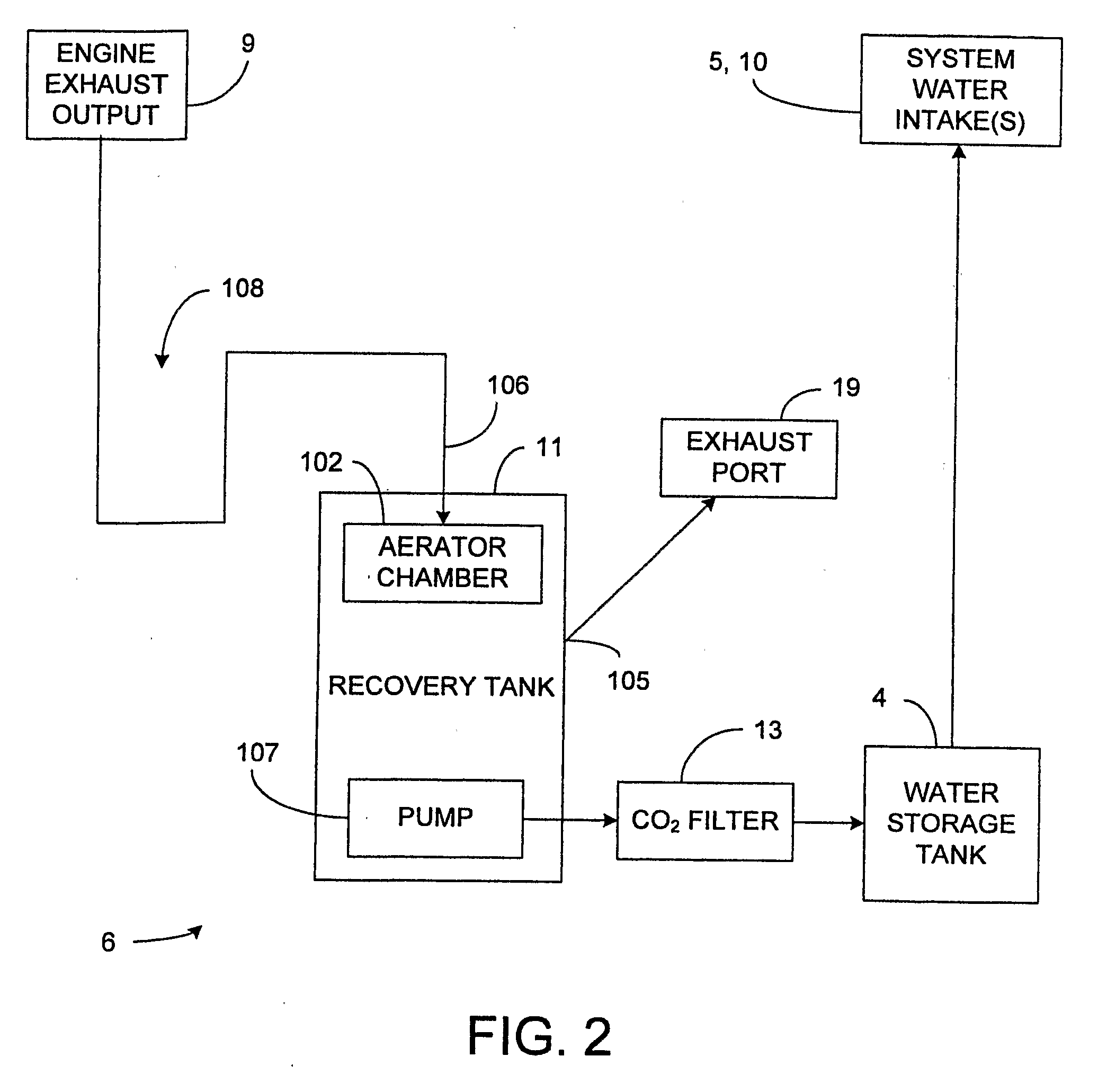Fuel Supply System for a Vehicle Including a Vaporization Device for Converting Fuel and Water into Hydrogen
a technology of hydrogen and fuel supply system, which is applied in the direction of liquid fuel feeder, machine/engine, mechanical apparatus, etc., can solve the problems of high carbon monoxide emissions from the exhaust of these engines, the inability to achieve fuel economy at the expense of the power and size of the vehicle, and the contribution of conventional internal combustion engines to the environmen
- Summary
- Abstract
- Description
- Claims
- Application Information
AI Technical Summary
Problems solved by technology
Method used
Image
Examples
Embodiment Construction
[0024]The present invention provides an improved fuel supply system that uses the novel fuel reformer of U.S. Pat. No. 6,508,201, while improving upon the prior fuel supply system by utilizing the large amount of thermal energy that is created upon igniting the hydrogen gas introduced into the engine's cylinders. In particular, the present invention converts the generated thermal energy into a physical force that further drives the pistons of the engine.
[0025]As described in detail below, the fuel supply system 1 of the present invention is designed to inject water into each cylinder of an internal combustion engine immediately after ignition of the hydrogen at or before top dead center. Preferably, the water is injected into the combustion chamber 2 of each cylinder at 12 degrees of the crank shaft 7 rotation after spark ignition within that cylinder. The thermal energy generated by the ignition of the hydrogen converts the injected water into steam, which rapidly expands in the li...
PUM
 Login to View More
Login to View More Abstract
Description
Claims
Application Information
 Login to View More
Login to View More - R&D
- Intellectual Property
- Life Sciences
- Materials
- Tech Scout
- Unparalleled Data Quality
- Higher Quality Content
- 60% Fewer Hallucinations
Browse by: Latest US Patents, China's latest patents, Technical Efficacy Thesaurus, Application Domain, Technology Topic, Popular Technical Reports.
© 2025 PatSnap. All rights reserved.Legal|Privacy policy|Modern Slavery Act Transparency Statement|Sitemap|About US| Contact US: help@patsnap.com



